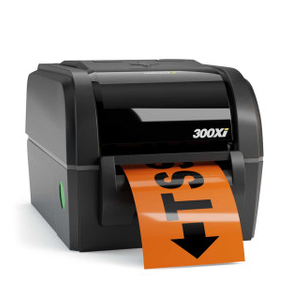If you have ever managed a warehouse, retail store, or production unit, you know how important labeling is for smooth operations. Labels keep everything organized, from tracking products to managing inventory and ensuring compliance with industry standards. But the unsung hero behind sharp, long-lasting labels is not just the printer itself, it’s the ribbon you choose. A poor-quality ribbon can lead to smudged prints, wasted labels, and unnecessary costs. That is why understanding how to select and maintain the right label printer ribbon can transform your printing process and save you money in the long run.
Why the Right Ribbon Matters
Think of labels as the business’s silent workers. They carry vital details such as barcodes, product IDs, prices, and instructions. If the ribbon behind those prints fails, the label becomes unreadable. This creates issues in scanning, delays in logistics, and even compliance problems.
Choosing the right ribbon means your labels will look professional and withstand different conditions. Imagine shipping a box of electronics nationwide and having the shipping label fade before it reaches the customer. Or labeling frozen goods only to see the text smear in cold storage. These are common problems that businesses face when they use the wrong ribbon type.
A reliable label printer ribbon ensures:
- Consistent print quality.
- Smudge-resistant text and images.
- Long-lasting durability against heat, cold, and moisture.
- Compatibility with your printer for smooth operations.
This small decision can make a big difference in efficiency and brand reliability.
Different Types of Ribbons Explained
Before buying, it helps to understand that not all ribbons are created equal. They differ in material, coating, and how they interact with labels. The three main categories are:
1. Wax Ribbons
Wax ribbons are the most common and cost-effective option. They are ideal for printing labels that do not face extreme conditions. Perfect for shipping, retail tags, or general inventory, they deliver crisp prints cheaply. However, wax ribbons are not resistant to scratching, heat, or moisture.
Best for: Shipping labels, retail barcodes, and short-term inventory labels.
2. Wax-Resin Ribbons
This type offers a mix of affordability and durability. With wax-resin ribbons, you get sharper images and added resistance to abrasion and chemicals. They are commonly used in healthcare, food packaging, and industries where labels must last longer than average.
Best for: Product labeling, medical supplies, frozen goods.
3. Resin Ribbons
Resin ribbons are the most durable and advanced. They produce labels that resist heat, chemicals, water, and even solvents. These are used in industries where labels, such as electronics, automotive, or chemical manufacturing, must withstand tough conditions.
Best for: High-durability labels, electronic components, outdoor applications.
Understanding these options can help you avoid paying for unnecessary durability or risking product issues with too-weak ribbons.
Matching Ribbon with Label Material
A common mistake businesses make is choosing ribbons without considering the label material. For example:
- Paper labels pair best with wax ribbons for everyday use.
- Synthetic labels, such as polyester or polypropylene, require wax-resin or resin ribbons to ensure the text doesn’t fade or smudge.
- Outdoor or chemical-resistant labels almost always need resin ribbons.
The key is alignment. If the ribbon and label material don’t match, you’ll have wasted supplies, poor printing, and labels that fail in real conditions.
Practical Scenarios
Let’s take a few real-life examples to make it clearer:
- Retail store scenario: A clothing retailer uses wax ribbons for tags. Since the labels don’t need to last beyond the point of sale, this choice keeps costs low while maintaining clarity.
- Cold storage scenario: A frozen food manufacturer uses wax-resin ribbons to prevent smudging in low temperatures. Labels stay readable despite ice and condensation.
- Electronics factory scenario: An electronics supplier relies on resin ribbons. Their labels must resist heat during soldering and exposure to cleaning solvents.
These examples show that the right ribbon is not about confusion; it’s about matching needs with technology.
Maintenance Tips for Longer Ribbon and Printer Life
Properly maintaining quality ribbons is just as important once you invest in quality ribbons. Here are a few practical tips:
- Store properly: Keep ribbons in a cool, dry place away from direct sunlight. Heat can damage the coating and reduce print quality.
- Clean the printhead regularly: Dust and residue cause wear and streaks. Use cleaning pens or wipes as recommended.
- Replace on time: Don’t try to overuse a ribbon that’s near its end. Low ribbon tension can damage printheads.
- Check alignment: Incorrect loading or alignment can cause wrinkles and uneven prints.
By following these steps, you extend both the ribbon’s and the printer’s lifespan.
Final Thoughts
Labels may seem small in the bigger picture of running a business, but they are enormously important. From ensuring logistics accuracy to protecting product identity, every label needs to be clear, durable, and professional. The right label printer ribbon is the backbone of this process. By understanding ribbon types, matching them with materials, and maintaining your printer properly, you can achieve consistent results while saving costs over time.
Investing in the right ribbon is not just a technical choice; it is a business decision that improves efficiency, strengthens branding, and builds customer trust.



